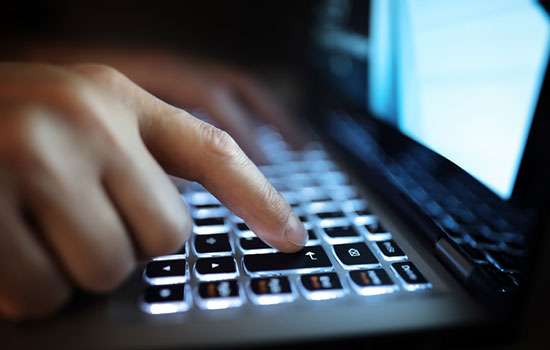Credit: Monash University
The first comprehensive research on "revenge porn" has revealed the mass scale of victimisation across Australia, with one in five people suffering image-based abuse, according to a study by Monash University and RMIT University.
The survey of more than 4200 people by Monash and RMIT researchers has shown women and men are equally likely to be victims.
But the research also showed marginalised groups are especially vulnerable, with image-based abuse affecting one in two Indigenous Australians and one in two people with a disability. The risk of victimisation is also higher for young people and lesbian, gay and bisexual Australians.
The most common types of abuse were taking sexual or nude images without consent (20 per cent), distributing images without consent (11 per cent) and threatening to share images (9 per cent).
The survey also for the first time revealed the damaging psychological toll on victims, with those threatened and experiencing "sextortion," and those whose images had been distributed, the most severely affected by depression and/or anxiety.
Monash University's Dr Asher Flynn said the prevalence and harms associated with image-based abuse warranted stronger action from online providers.
"Social media providers and internet companies need to introduce strong and proactive measures that take seriously the harms of image-based abuse, and seek to create safe online spaces for victims.
Dr Flynn said it was also likely the survey underestimated the extent of image-based abuse.
"Our survey only captured those victims who had become aware their images had been distributed, whereas some victims may never discover that their images have been taken and distributed, particularly if they are circulated on sites located on the dark web."
Chief investigator, RMIT University's Dr Nicola Henry, said the research showed this type of abuse affected a wider range of people than previously thought.
"Image-based abuse has emerged so rapidly as an issue that inevitably our laws and policies are struggling to catch up," Dr Henry said.
"This isn't just about 'revenge porn' - images are being used to control, abuse and humiliate people in ways that go well beyond the 'relationship gone sour' scenario."
RMIT's Dr Anastasia Powell said a lack of proper legal and support responses made it incredibly difficult for victims to get justice.
"We need to rethink our approach both from a legal perspective but also as a community, to change attitudes that often blame the victims and play down the very real harm caused by image-based abuse," she said.
The research recommends a range of reforms, including improved support services for victims such as a dedicated helpline similar to the "Revenge Porn Helpline" established in the United Kingdom in 2015.
Legal reforms proposed include making image-based abuse a crime under federal telecommunications law, and addressing the piecemeal legislative approach across the states (only Victoria and South Australia have specific laws that criminalise the distribution of intimate or invasive images without consent).
The study findings are from a national online survey of 4274 people aged 16 to 49.
Who are the victims?
- Women (22 per cent) and men (23 per cent) were equally likely to be victimised
- 56 per cent of people with a disability and 50 per cent of Indigenous Australians had been victims of image-based abuse
- People who identified as lesbian, gay or bisexual were more likely to be victims (36 per cent) than heterosexual people (21 per cent)
- 1 in 3 of people aged 16-19, and 1 in 4 aged 20-29, reported at least one form of image victimisation
- People who had shared sexual selfies were significantly more likely to have been victimised (37 per cent) than those who had never sent a sexual image (10 per cent)
How are they being affected?
- 23 per cent had experienced at least one form of image-based abuse victimisation
- 20 per cent had a sexual or nude image taken without their consent
- 11 per cent had an image sent onto others or distributed without consent, with 40 per cent of those reporting the images were distributed across multiple devices and platforms (including SMS, Snapchat, Facebook and "revenge porn" sites)
- 9 per cent had experienced "sextortion", or threats that an image would be shared without their consent
What is the impact?
- 80 per cent of people who had experienced "sextortion" reported high levels of psychological distress, consistent with moderate to severe depression and/or anxiety disorder, with 46 per cent also feeling highly fearful for their safety
- Moderate to severe depression and/or anxiety affected 75 per cent of victims whose images were distributed, and 67 per cent of those whose images were taken without consent
- 39 per cent of people whose images were distributed, and 28 per cent of those whose images were taken without consent, felt highly fearful for their safety
Who are the perpetrators?
- The majority (54 per cent) of victims reported the perpetrator was male, 33 per cent reported the perpetrator was female, 13 per cent were either unknown or a mixed group
- Women (39 per cent) were more likely than men (30 per cent) to be victimised by an intimate partner or ex-partner
- Women (12 per cent) were also more likely than men (5 per cent) to have had a stranger take a nude or sexual image of them without permission
The report, Not Just 'Revenge Pornography: Australian's Experience of Image-Based Abuse, is the first stage of research funded by La Trobe University, the Australian Criminology Research Council and the Australian Research Council. The next stage will extend the research beyond Australia, incorporating New Zealand and the UK.
Provided by Monash University




















